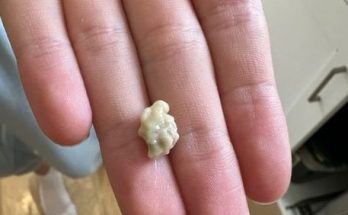
Find a 1979 penny? It might be worth a small fortune… Or at least 2 to 3 cents!
All 1979 Lincoln pennies are worth more than their face value.
So, how can you tell a rare 1979 penny worth thousands from one that’s worth just a couple cents?
Read on to see exactly what you should be looking for on your 1979 pennies…
1979 No Mintmark Penny Value

A 1979 Lincoln penny without a mintmark was made at the Philadelphia Mint.
While the U.S. Mint in Philly churned out 6,018,515,000 (yes, more than 6 BILLION) pennies in 1979, they have been getting harder to find in pocket change.
The reason for this is more and more people are pulling these old copper pennies out of circulation. They are sure to become even harder to find in day-to-day circulation in the years ahead.
Even the dingiest no mintmark 1979 penny with excessive wear is worth more than just 1 cent!
You see, all Lincoln Memorial pennies made before 1982 (the year the United States Mint began making these coins from a cheaper copper-plated-zinc format) are worth more than face value — because copper has risen so much in value.
In fact, that’s why the Mint switched metals in the early 1980s — because the value of the copper inside the coin was poised to be worth more than the coin’s stated value of “ONE CENT.”
So, pretty much any 1979 penny you find is worth 2 to 3 cents for its copper value alone. But some are worth much more still!
For example, uncirculated 1979 pennies without a mintmark — such as those that are fresh from the bank roll and have never been spent as money — are usually worth 10 to 30 cents apiece.
The most valuable no mintmark 1979 penny sold for $5,463 in a 2012 auction!
1979-D Penny Value
The 1979-D penny was made at the Denver Mint. It bears a small “D” mintmark below the date on the obverse (head’s side) of the coin.
The U.S. Mint struck 4,139,357,254 examples of the 1979-D penny. And, like its Philly Mint counterpart, it’s becoming harder to find in circulation these days — despite its big mintage number.
Also like the Philadelphia-born penny, the 1979-D Lincoln cent is worth more than its face value due to the coin’s copper composition.
The typical, worn (circulated) 1979-D penny has a value of 2 to 3 cents.
Average uncirculated specimens trade for 10 to 30 cents.
The most valuable 1979-D penny sold for $3,995 in 2016.
1979-S Penny Value
The U.S. Mint made a limited number of collectors-only Lincoln pennies in 1979 that were struck with terrific detail and reflective, mirror-like surfaces.
These so-called proof pennies were struck at the San Francisco Mint and contain an “S” mintmark.
The U.S. Mint in San Francisco produced 3,677,175 proof pennies in 1979, and there are two types of 1979-S pennies:
- 1979-S Type 1
- 1979-S Type 2
OK, so Type 1, Type 2… What does that even mean? And how do you tell the types apart?
A 1979-S Type 1 penny shows a blobby “S” mintmark that, even under a 5x magnifying glass, barely resembles an “S” at all. It looks more like a bubbly rectangle than it does an “S.”
In late 1979 the U.S. Mint coiners retooled the mintmark so it looked more like an “S.” The 1979-S Type 2 has a lot more definition and much more closely resembles an “S.”
The 1979-S Type 1 proof penny is much more common than the 1979-S Type 2 proof penny. However, because both types are plentiful enough to satisfy current collecting demand, there really isn’t any huge difference in their prices. Both the 1979-S Type 1 and Type 2 pennies sell for around $5 to $10 apiece for a typical specimen.
The record price for a 1979-S Type 1 proof penny is $10,925, while the most valuable 1979-S Type 2 proof penny sold for $3,819.
Keep in mind, you probably won’t be finding any 1979-S proof pennies in your pocket change — because those coins weren’t distributed by the U.S. Mint into circulation.
Other 1979 Penny Errors & Varieties Worth Looking For
There are lots of errors and varieties on 1979 pennies that you can actually find in pocket change. And… they’re worth lots of money!
These are the ones you are most likely to find:
1979 Doubled Die Penny
There are some 1979 doubled die pennies that are worth big bucks, but you’ve got to know what you’re looking for to find them.
Remember that not all doubling you find on a coin is rare and valuable. In fact, most of the doubling you’re likely to find on old coins is simply machine doubling — which is caused by problems with the way the coin was struck. Machine doubled coins are not doubled dies. They are common pieces worth little, if anything, over their regular values.
When you’re searching for valuable doubled dies on 1979 pennies, you should look for doubling in the lettering, date, bowtie, face, and ear details on the obverse. On the reverse (“tails side”), look for doubling in the lettering or the columns of the Lincoln Memorial.
There are no known 1979 doubled die pennies with super-drastic doubling — certainly nothing on the order of the 1955 doubled die penny or even the 1972 doubled die penny. But even the more modest, obscure 1979 doubled die pennies can trade for $20 to $50 apiece… or more!
1979 BIE Penny
There’s a kind of error known as a die break that occurs when a die that is punching a design onto blank coins starts to show signs of wear through cracking. These cracks can transfer onto the struck coin in the form of a raised line, squiggle, bump, or lump.
There’s a certain kind of die crack variety that is unique to Lincoln pennies. It’s called the BIE variety — which is a short, vertical raised line seen between the letters “B” and “E” of “LIBERTY” on the obverse of the coin. This little line roughly resembles a capital letter “I,” thus lending to the “BIE” nickname for this variety.
BIE pennies are relatively common — but they are great collectibles that some Lincoln penny enthusiasts try collecting by date.
A 1979 BIE penny in average worn condition is worth somewhere in the neighborhood of $5 to $10.
1979 Penny With A Repunched Mintmark
In the late 1970s, the U.S. Mint was still punching mintmarks by hand into the working dies — which opened the door for many mistakes to happen along the way.
These little mishaps often resulted in slightly crooked mintmarks and other small but noticeable things that weren’t quite right. Coiners would try fixing these mistakes by repunching the mintmark — but this didn’t always obliterate the original (incorrect) mintmark punch.
Values for 1979 pennies with repunched mintmarks vary depending on how drastic the error is — but the typical variety of this nature is worth $3 to $10.

